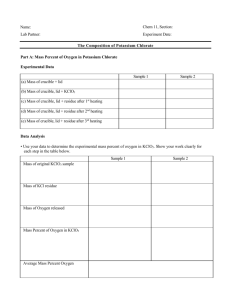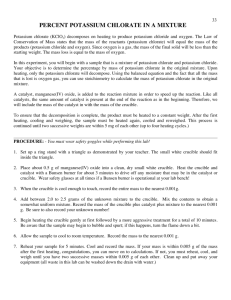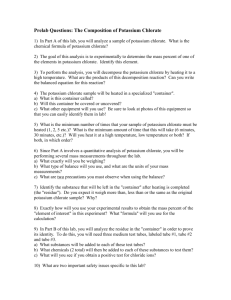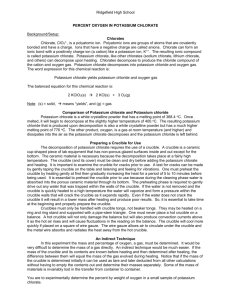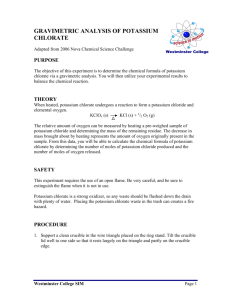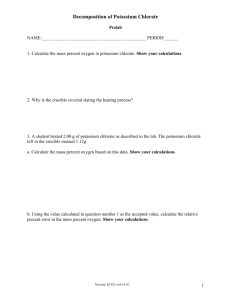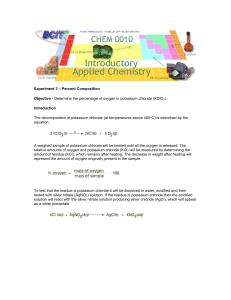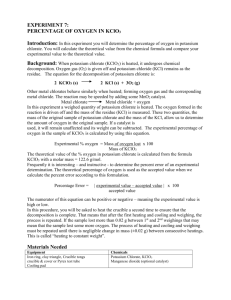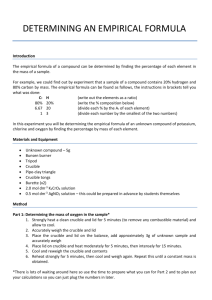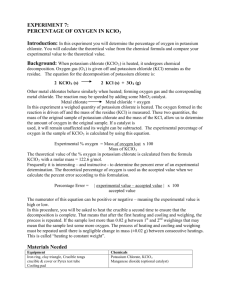Lab#______ Decomposition Reaction
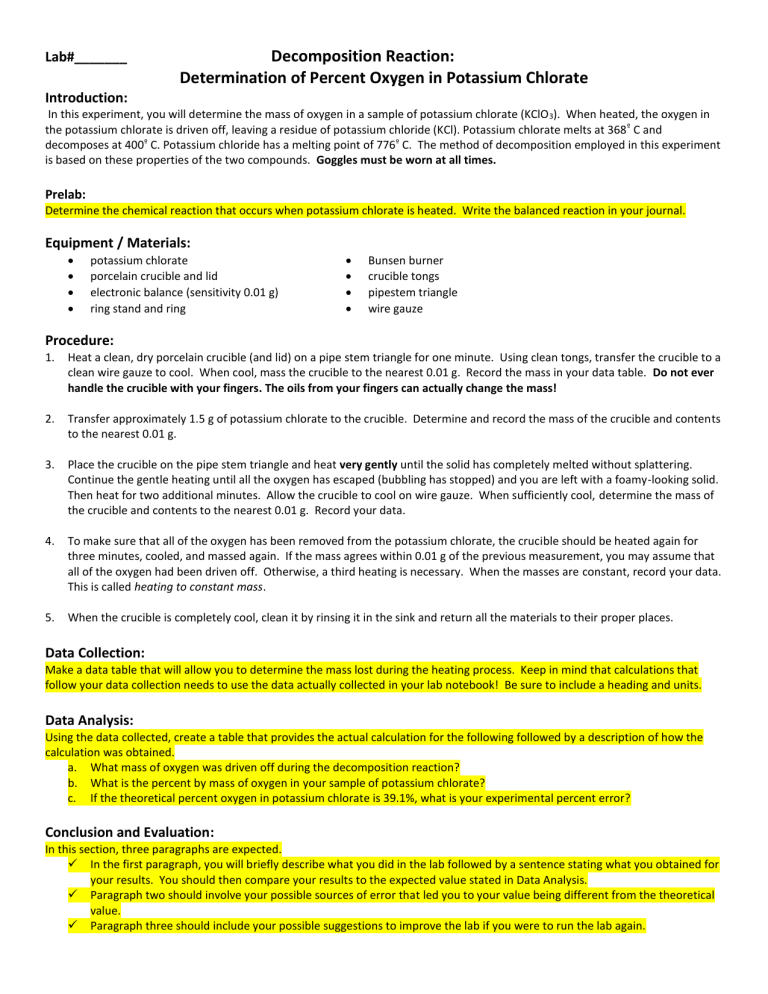
Lab#_______ Decomposition Reaction:
Determination of Percent Oxygen in Potassium Chlorate
Introduction:
In this experiment, you will determine the mass of oxygen in a sample of potassium chlorate (KClO
3
). When heated, the oxygen in the potassium chlorate is driven off, leaving a residue of potassium chloride (KCl). Potassium chlorate melts at 368 º C and decomposes at 400 º C. Potassium chloride has a melting point of 776 º C. The method of decomposition employed in this experiment is based on these properties of the two compounds. Goggles must be worn at all times.
Prelab:
Determine the chemical reaction that occurs when potassium chlorate is heated. Write the balanced reaction in your journal.
Equipment / Materials:
potassium chlorate
porcelain crucible and lid
electronic balance (sensitivity 0.01 g)
ring stand and ring
Bunsen burner
crucible tongs
pipestem triangle
wire gauze
Procedure:
1. Heat a clean, dry porcelain crucible (and lid) on a pipe stem triangle for one minute. Using clean tongs, transfer the crucible to a clean wire gauze to cool. When cool, mass the crucible to the nearest 0.01 g. Record the mass in your data table. Do not ever
handle the crucible with your fingers. The oils from your fingers can actually change the mass!
2. Transfer approximately 1.5 g of potassium chlorate to the crucible. Determine and record the mass of the crucible and contents to the nearest 0.01 g.
3. Place the crucible on the pipe stem triangle and heat very gently until the solid has completely melted without splattering.
Continue the gentle heating until all the oxygen has escaped (bubbling has stopped) and you are left with a foamy-looking solid.
Then heat for two additional minutes. Allow the crucible to cool on wire gauze. When sufficiently cool, determine the mass of the crucible and contents to the nearest 0.01 g. Record your data.
4. To make sure that all of the oxygen has been removed from the potassium chlorate, the crucible should be heated again for three minutes, cooled, and massed again. If the mass agrees within 0.01 g of the previous measurement, you may assume that all of the oxygen had been driven off. Otherwise, a third heating is necessary. When the masses are constant, record your data.
This is called heating to constant mass.
5. When the crucible is completely cool, clean it by rinsing it in the sink and return all the materials to their proper places.
Data Collection:
Make a data table that will allow you to determine the mass lost during the heating process. Keep in mind that calculations that follow your data collection needs to use the data actually collected in your lab notebook! Be sure to include a heading and units.
Data Analysis:
Using the data collected, create a table that provides the actual calculation for the following followed by a description of how the calculation was obtained. a.
What mass of oxygen was driven off during the decomposition reaction? b.
What is the percent by mass of oxygen in your sample of potassium chlorate? c.
If the theoretical percent oxygen in potassium chlorate is 39.1%, what is your experimental percent error?
Conclusion and Evaluation:
In this section, three paragraphs are expected.
In the first paragraph, you will briefly describe what you did in the lab followed by a sentence stating what you obtained for your results. You should then compare your results to the expected value stated in Data Analysis.
Paragraph two should involve your possible sources of error that led you to your value being different from the theoretical value.
Paragraph three should include your possible suggestions to improve the lab if you were to run the lab again.
